Tennis top guns driving ATP revenues
- Published
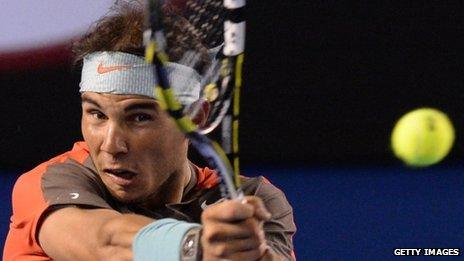
Rafael Nadal is one of a golden quartet at the top of the sport
It is a healthy time for men's tennis, with four big sporting names - Rafael Nadal, Andy Murray, Novak Djokovic, and Roger Federer - driving business on and off the court.
For Chris Kermode, settling into his three-year role as ATP executive chairman and president, that translates into growing viewing figures and revenues.
The 49-year-old is the man behind the successful Barclays ATP World Tour Finals annual showpiece at London's O2 and is also credited with reinvigorating the Aegon Championships at the Queen's Club during his time there as tournament director.
"I'm fortunate to be taking over the ATP at such an exciting time in the game," he tells the BBC Business website. "People have been saying this is a golden era in men's professional tennis for several years now."
But - as in other professional sports - the business challenge is to continue that winning streak, in an increasingly competitive global sports and entertainment landscape.
Big name sponsors
"We've all got to understand the demands on people's discretionary income are huge, they are being pulled in loads of different avenues - entertainment options of film, music, sport - so we just need to make sure that our market share remains and hopefully grows as well," says Mr Kermode, who has been involved in tennis for 30 years.
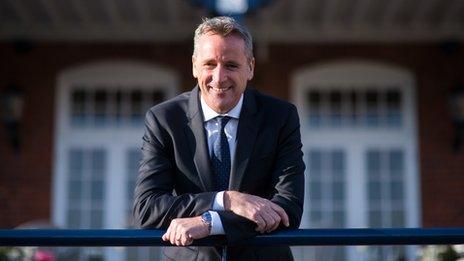
New ATP boss Chris Kermode has been involved in tennis for 30 years
He says even in an area like TV rights - which has seen growth in viewership, broadcast hours and TV revenues at the ATP World Tour Masters 1,000 and 500 level - there is scope to do more.
One option being examined is whether packaging up the 40 events at ATP World Tour 250 level could generate greater growth not only in viewership but also in revenues.
Elsewhere, fresh revenues have been coming in through live streaming, as well as data distribution - on both the ATP World Tour and ATP Challenger Tour, with the latter undergoing a significant reinvestment programme.
Prize-money levels on the Challenger Tour are being raised to $40,000 (£24,500) and the hope is to increase that to $50,000.
Sponsorship has been a strength for the ATP in recent years, with big names such as Corona, FedEx, Emirates, Ricoh, Moet & Chandon, Enel and Rolex signing up.
"We're always looking at opportunities to expand our sponsorship roster, not only at tour level but also at the season-ending Barclays ATP World Tour Finals, which remains our biggest single revenue driver for the tour overall," says Mr Kermode.
"The commercial success of our year-end event is absolutely critical to the tour as a whole."
'Fast growing audience'
Digital marketing has played an instrumental part in the ATP's overall marketing efforts and this is another potential growth area, with a three-year strategy launched last year.
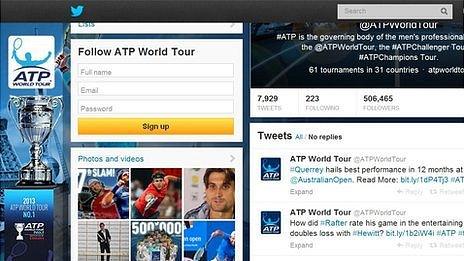
The ATP is aware of the importance of its digital and new media audience
"It's a huge and fast-growing audience," says Mr Kermode - who has also worked in the film and music industries - of the modern digital market.
"The landscape changes very quickly and fans are looking to consume the sport in a variety of different ways from one year to the next, so it's essential that we keep up the pace."
Like many sports, the ATP has looked to expand into new markets like South America and China, and this year Rio will host a new ATP World Tour 500 event for the first time.
Meanwhile, focus must be maintained in traditional markets in Europe and the US, with the latter hosting more ATP World Tour events - including some of the biggest and most successful - than any other country.
'Next generation'
Of course the quartet of players mentioned earlier have helped in that continuing success. So why does he think they have captured the public imagination?
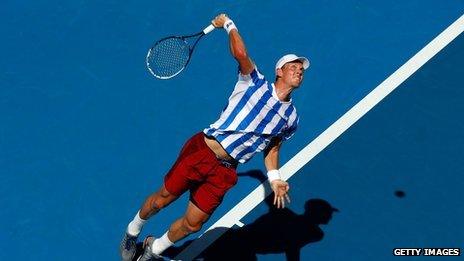
Mr Kermode says there is strength in depth in the men's game
"I think it comes down to two things really: personalities, and the product on court," says Mr Kermode.
"When you combine those two, the current generation really offers something special and unique. Having four global sporting icons in one generation is quite incredible. I've never seen that in my years of tennis."
He says it was seeing Rafael Nadal play at the Queen's Club that transformed his son from tennis sceptic into keen player.
Meanwhile, he believes players such as Wawrinka, Del Potro, Tsonga, Ferrer, Monfils, Berdych and Gasquet also add strength in depth to the current men's game. However, does a potential "personality drought" some time in the future worry him?
"People talk about the changing of the guard, and it's going to be very exciting to see who emerges in the next few years," he says. "We have to be ready from a promotional and marketing perspective to build on the next generation of stars."
'Confidence in product'
As a one-time journeyman player (he reached world number 742 in 1986), Kermode never hit the dizzy heights, but feels that experience is of importance now.
"I got a taste of hacking around as a very average player, but I understand what players go through," he says.
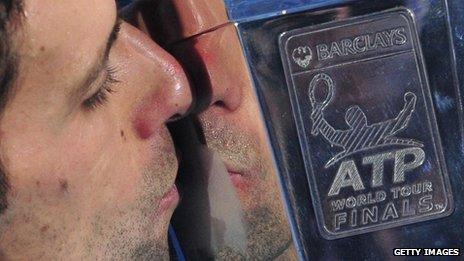
The ATP took what many felt was a gamble in moving its finals to the O2
"I clearly don't have the experience of a top-10 player because I was never a top-10 player, but I have an understanding of where the players are coming from, and the struggle and the difficulties playing the qualifying rounds at that sort of level."
But it was as a tennis administrator that he made his name, particularly with the move of the ATP World Tour Finals to London in 2009.
Accessible ticket prices, from £20, have created a new UK tennis audience - outside the traditional summer months, with healthy attendances of 1.25 million fans across the last five years.
Another move that Mr Kermode says showed "confidence in our product" was the decision to have two tennis sessions a day, rather than "the easy option" of just one.
He adds: "It's easy to forget where we came from when we were looking at the O2 as a building site back in 2007. Many people thought we were mad to be doing what we were doing."